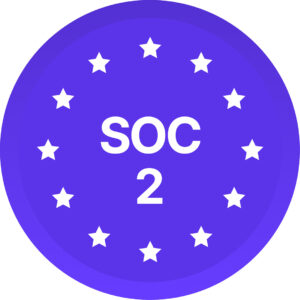In today’s ever-evolving workplace landscape, diversity and inclusion have become fundamental pillars for fostering innovation, creativity, and productivity. While diversity initiatives often focus on aspects such as race, gender, and sexual orientation, an equally important facet that is gaining recognition is neurodiversity. Understanding and embracing neurodiversity not only enriches workplace culture but also unlocks the full potential of all employees.
I have had a lot of exposure to neurodiversity both in my personal and work life. I am a parent of four and all four of my children have some neurodivergence. One is on the autism spectrum, one has ADHD (Attention Deficit Hyperactivity Disorder), one experiences generalized anxiety and another has OCD (Obsessive Compulsive Disorder). All four are now adults and continue to experience challenges due to their atypical neurology. My life as a parent was an endless stream of investigation, research, consultations, and intervention strategies. Today, as a human resources professional, it is important that I assist my organization, the managers, and individual employees through the many challenges that a workplace can present for the neurodivergent.
In this blog, I’d like to outline some of the benefits, challenges, and strategies that organizations can implement to ensure a workplace that is neurodivergent inclusive.
Let’s start by getting our terminology straight. Neurodiversity refers to the natural variation in neurological traits, including differences in brain function and behavioural traits. It encompasses a wide range of neurotypes, such as Autism Spectrum Disorder, Attention Deficit Hyperactivity Disorder, dyslexia, dyspraxia, Tourette syndrome, mental illnesses, and others. Neurodivergence, on the other hand, refers to individuals whose neurological development and functioning differ from what is considered typical or “neurotypical.”
In the context of the workplace, neurodivergent individuals bring unique perspectives, talents, and skills that can significantly contribute to organizational success. However, they also face specific challenges that can hinder their full participation and engagement. Understanding these challenges is crucial for employers to implement effective strategies for creating inclusive environments. Here are some common challenges faced by neurodivergent employees and strategies for employers to foster inclusion:
1. Communication and Social Interaction
Neurodivergent individuals may struggle with social cues, nonverbal communication, and interpersonal interactions. This can lead to misunderstandings, isolation, and difficulty building relationships with colleagues.
Strategies:
- Provide clear communication channels and guidelines for interaction. Encourage team members to express themselves in writing when needed.
- Consider offering the opportunity and the space to retreat to a quiet place, or to work independently.
- Offer clear guidelines as to what conversation topics are appropriate for the work environment.
- Be mindful of the use of eye contact and take the time to understand how others socialize. Make sure to say exactly what you mean! Avoid the use of slang, nuance, and sarcasm. Monitor your tone of voice and give time for processing during a conversation. One employee suggested counting silently to 20 in your head after asking a question.
2. Sensory Sensitivities
Many neurodivergent individuals experience over-responsivity or under-responsivity to sensory stimuli, such as loud noises, bright lights, or crowded spaces. These sensitivities can cause discomfort, distraction, and overwhelm in the workplace.
Strategies:
- Create a sensory-friendly environment by minimizing noise levels, strong scents, providing adjustable lighting, and offering designated quiet areas.
- Allow flexibility in workspace arrangements and dress codes, to accommodate individual sensory needs.
- Implement a policy where employees can use noise-canceling headphones or fidget toys to manage sensory input.
- Be sensitive to and tolerant of the need for repetitive movements, or calming and regulating activities such as gum chewing, or sucking on a hard candy.
3. Routine and Change Management
Neurodivergent individuals often thrive on routine and predictability. Sudden changes or disruptions to their routines can cause anxiety and difficulty adapting to new situations.
Strategies:
- Provide advance notice through multiple methods for any changes in schedules, procedures, or assignments.
- Offer support and guidance during transitions by explaining why the change is happening and what will and will not change – this will help neurodivergent employees adjust smoothly.
- Establish clear expectations and routines to provide structure and stability in the work environment.
4. Executive Functioning and Organization
Challenges with executive functioning, such as time management, planning, and organization, are common among neurodivergent individuals. This can affect their ability to prioritize tasks, meet deadlines, and stay focused on goals.
Strategies:
- Provide tools and resources, such as task management software or visual schedules, to support organization and time management skills.
- Break down complex tasks into smaller, manageable steps and provide regular feedback and check-ins to ensure progress.
- Consider a variety of flexible work arrangements such as start/end times, number and timing of breaks, work location, and how collaboration and teamwork is done.
5. Stigma and Misunderstanding
Despite growing awareness, there is still a stigma surrounding neurodiversity in many workplaces. Neurodivergent individuals may face discrimination, stereotyping, and lack of understanding from colleagues and supervisors.
Strategies:
- Promote education and awareness initiatives to foster understanding and acceptance of neurodiversity.
- Encourage open dialogue and communication about neurodiversity in the workplace.
- Implement zero-tolerance policies for discrimination and provide training on unconscious bias to all employees.
6. Career Development and Advancement
Neurodivergent individuals may encounter barriers to career advancement due to perceived limitations or biases from decision-makers.
Strategies:
- Offer equal opportunities for professional development, training, and career advancement to all employees, regardless of neurodiversity.
- Provide mentorship programs and networking opportunities to support the growth and success of neurodivergent talent.
- Recognize and celebrate the unique strengths and contributions of neurodivergent employees.
You may be wondering why employers should bother with all this. Is there that much benefit to ensuring inclusion for neurodivergent employees? I believe it is! If you aren’t creating an inclusive environment where neurodivergent employees can thrive, you are potentially missing out on some extraordinary talent! There are many famous individuals who are known or believed to be neurodivergent, and their contributions span various fields, from science and technology to art and literature.
Albert Einstein is believed by many experts to have exhibited traits associated with autism. His extraordinary ability to think abstractly and visualize complex concepts revolutionized our understanding of the universe, leading to groundbreaking discoveries such as the theory of relativity.
Temple Grandin, an American scientist, and autism advocate has made significant contributions to the field of animal science and welfare. Despite facing challenges associated with autism, including sensory sensitivities and social difficulties, Grandin developed innovative livestock handling systems that have improved the lives of countless animals in the agricultural industry. She is also an author and speaker, raising awareness about autism and advocating for neurodiversity acceptance.
Renowned filmmaker Tim Burton is known for his distinctive visual style and imaginative storytelling in movies such as “Edward Scissorhands,” “The Nightmare Before Christmas,” and “Beetlejuice.” Burton has spoken openly about his experiences with ADHD and dyslexia, which he believes have influenced his creative process and artistic vision, contributing to his unique cinematic creations.
The Swedish environmental activist, Greta Thunberg gained international recognition for her advocacy work on climate change. Thunberg, who has been diagnosed with Asperger’s syndrome, has inspired millions of people around the world to act against the climate crisis through her powerful speeches and grassroots activism. Her unwavering commitment to raising awareness about environmental issues has earned her numerous accolades, including Time magazine’s Person of the Year in 2019.
The co-founder of Apple Inc., Steve Jobs, was a visionary entrepreneur and pioneer of the technology industry. Although Jobs was never formally diagnosed, many experts and biographers believe that he exhibited traits associated with ADHD. His relentless pursuit of innovation and perfection, coupled with his ability to think outside the box, led to the creation of iconic products such as the iPhone, iPad, and MacBook, revolutionizing the way we communicate, work, and interact with technology.
These examples demonstrate that neurodivergent individuals have made significant contributions to society across various domains, showcasing the richness of human diversity and the importance of embracing neurodiversity in all its forms. Their stories serve as inspiration and remind us of the immense potential that lies within everyone, regardless of neurotypicality.
Embracing neurodiversity in the workplace is not only a matter of social responsibility but also a strategic imperative for organizations seeking to thrive in today’s diverse and dynamic world. By recognizing the value of neurodivergent individuals, understanding their unique strengths and challenges, and implementing inclusive practices and policies, employers can create environments where all employees feel valued, respected, and empowered to contribute their best. Together, we can build workplaces that celebrate the richness of human diversity and unlock the full potential of every individual.
Resources:
- Six Principles Resources, Sinneave Family foundation – Website: Six Principles Resources – Sinneave Family Foundation (sinneavefoundation.org)
- Armstrong T. The Power of Neurodiversity: Unleashing the Advantages of Your Differently Wired Brain. Da Capo Lifelong; 2011.
This blog was originally published by Diversio EDU (formerly CCDI Consulting) in April 2024.
Our newsletter and blogs feature personal opinions and diverse viewpoints. We aim to create a safe space for our team to share their perspectives on diversity and inclusion. Please note that individual articles may not align with every reader’s view or comprehensively cover a topic. We appreciate the diversity of opinions and respect our team’s contributions.

